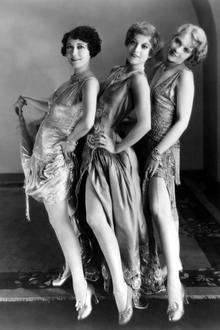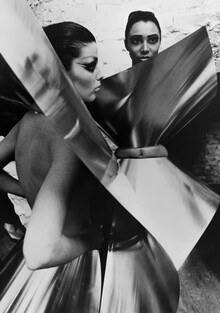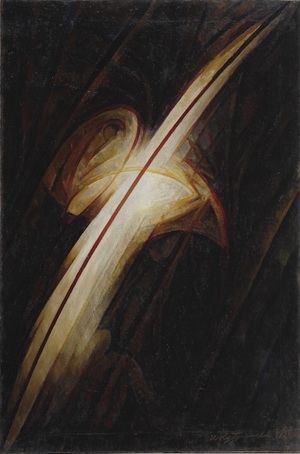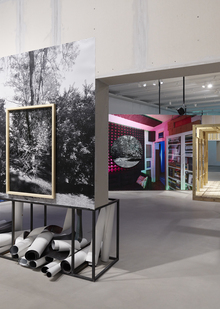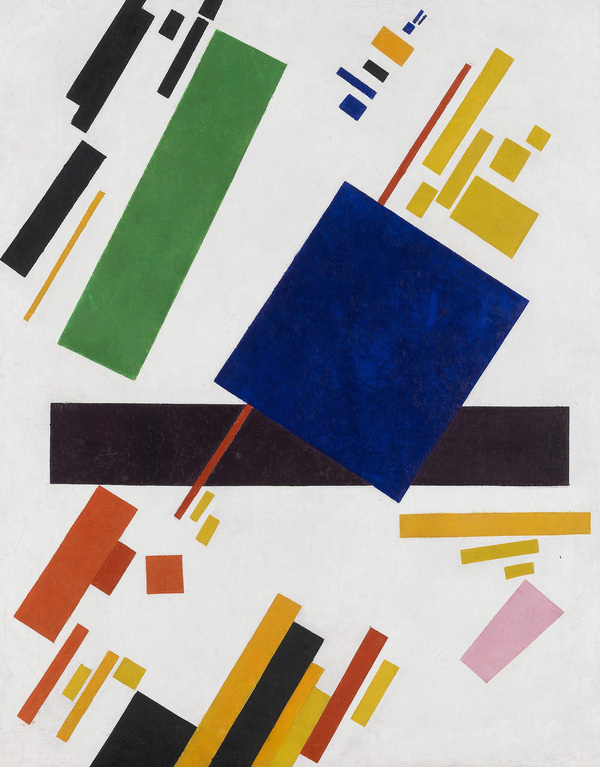
Malevich and Suprematism in commercial design
Concept
The works of Kazimir Malevich and Suprematism as an artistic movement occupy an important place in the history of 20th century art. Based on pure geometry and minimalism, Suprematism was a revolutionary step in the development of abstract art. However, its influence goes far beyond traditional art and is reflected in contemporary commercial design practices, from branding and packaging to digital interfaces and advertising.
The choice of the topic «Malevich and Suprematism in Commercial Design» is due to the relevance of the study of the transition of artistic concepts into applied spheres. In the era of visual oversaturation and rapid technological development, the ideas of minimalism and geometric abstraction take on a new meaning, helping to create concise, recognizable and effective visual solutions. This study aims to show how Malevich’s legacy is transformed in design, and what techniques of Suprematism continue to inspire contemporary professionals.
The principle of material selection was chosen for the visual research, which allows us to analyze a variety of examples of commercial design, in which the characteristic features of Suprematism are clearly visible: the use of simple geometric forms, limited color palette, emphasis on spatial composition and contrasts. The visual series includes logos, packaging, digital interfaces and advertising campaigns that reflect the continuity of Malevich’s ideas and their adaptation to contemporary challenges.
The structure of the study follows the logic from historical context to modernity: first the main concepts and artistic techniques of Suprematism are considered, then a comparative analysis of visual examples in commercial design is conducted. The conclusion summarizes the results, highlighting the main trends and Malevich’s influence on the formation of visual culture of the XXI century.
Textual sources for analysis were chosen on the basis of their authority and relevance to the topic — scientific articles on art history, works on design theory and contemporary publications on graphic design and branding. The main principle is the combination of historical-artistic and applied approaches that allow to comprehensively reveal the topic.
Hypothesis of the study: «The principles of Suprematism — the use of geometric forms, minimalism and color contrasts — continue to be actively used in commercial design, providing it with brevity, expressiveness and relevance, thus forming the visual language of modern branding and digital media.»
Thus, the research aims to identify and conceptualize the relationship between Malevich’s legacy and contemporary visual practices, which will help to understand how classical art influences commercial fields and design of the future.
How are the ideas and visual techniques of Kazimir Malevich and Suprematism manifested and transformed in the commercial design of today?
Sections
1.Concept 2.A brief overview of Suprematism and Malevich’s art 3.Malevich’s characteristic techniques and their reflection in modern commercial design 3.1 Geometry and abstraction 3.2 Minimalism and rejection of excessive details 3.3 Color contrast and the use of a limited palette 3.4 Dynamics of composition and asymmetry 4.Analyzing case studies from commercial design 5.Conclusion 6.Bibliography and list of image sources
A brief overview of Suprematism and Malevich’s art
A key work of Suprematism that radically changed artistic canons. A symbol of absolute abstraction and rejection of subject matter.
Suprematism was an artistic movement created by Malevich, relying on the simplest geometric shapes and pure colors as an expression of an absolute artistic idea.
An experiment with color and space that reflects the idea of infinity and spiritual purity.
Suprematism had a strong influence on the development of abstract art and provided the basis for further experimentation in design and architecture.
The work demonstrates the power of color and form as independent expressive means unrelated to the depiction of real objects.
Characteristic techniques of Malevich and their reflection in modern commercial design
Geometric forms are the basis of Suprematism. Squares, circles, lines and rectangles Malevich used to express the idea of pure form.
The composition is composed of simple geometric shapes, demonstrating balance and dynamics.
In modern design, geometry is used to create concise, easily recognizable visual marks.
The use of simple shapes and clean lines makes the brand recognizable and versatile.
Minimalism, as a continuation of Suprematism, refuses unnecessary details and strives for clarity and functionality.
A simple and clean design focused on recognizability and ease of perception.
Color plays an important role in Suprematism — Malevich used bright, pure colors to create expressiveness and emotional tension.
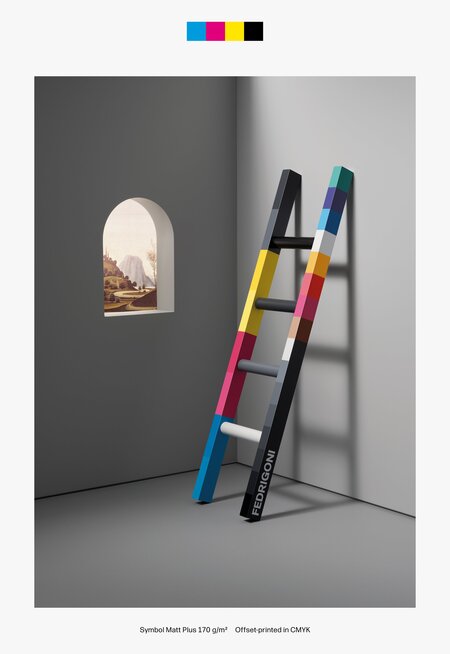

The minimalist staircase form, reminiscent of the dynamic structures in Lissitzky’s Prounces, shows the architectural dimension of Suprematism. The simplest form is transformed into a rhythmic graphic. The work seems to explore how simple movement on a plane can generate depth — as Lissitzky did in his projections.
Each fragment works as an independent visual element, forming an abstract system. Like suprematist forms, they transcend the functional — and become a sign.
The minimalism, bright color accents and isolation of objects in the background are a clear echo of Malevich’s early abstractions.

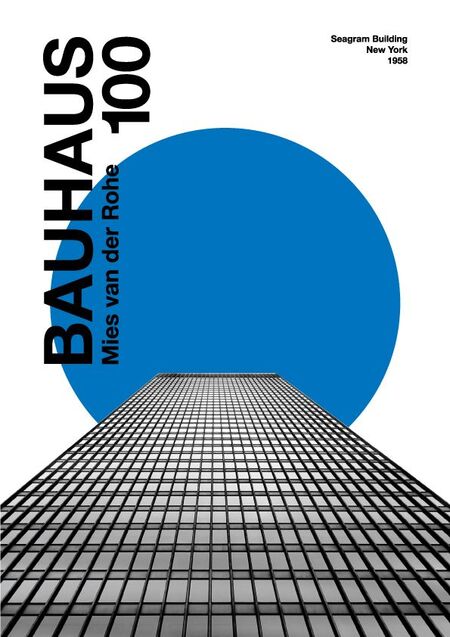
Visual quotation of Malevich through the stylization of a historical publication — flat forms, bright color, dynamism
A powerful visual statement using Suprematist forms. One of the most famous examples of political design based on Suprematism.

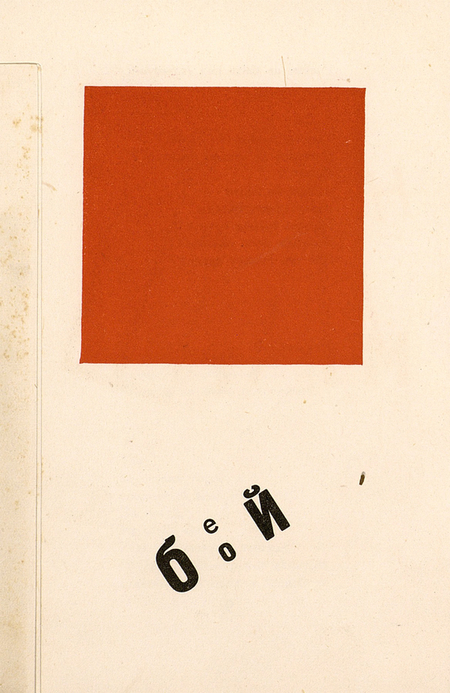
two intersecting circles — a reference to Malevich’s compositions
three stripes — rhythm and simplicity

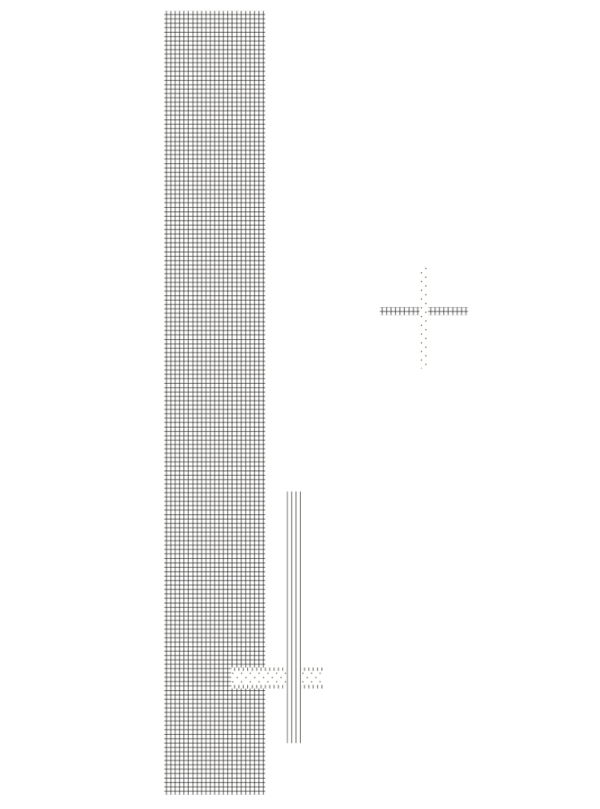
The use of abstract geometric forms and dynamic compositions echoes the ideas of Suprematism, demonstrating the connection between the classical avant-garde and contemporary graphic design.
Conclusion
The legacy of Kazimir Malevich and Suprematism has had a huge impact not only on the history of 20th century art, but also on modern commercial design. The new visual language based on pure geometry, minimalism and color contrasts became a universal tool for creating concise, expressive and functional images.
Malevich’s Suprematism has not just left a trace in art, it is actively developing and transforming in modern visual practices. This can be seen in logos, packaging, digital interfaces and advertising campaigns, where the principles of minimalism, rejection of unnecessary details, use of a limited palette and dynamic compositions are becoming the norm. This visual language is perceived by a wide range of people, from design professionals to ordinary consumers, which confirms the sustainability and relevance of Suprematist ideas.
The study showed that Malevich’s characteristic techniques — geometry and abstraction, minimalism, color contrast, dynamics and asymmetry — continue to inspire designers and shape the visual culture of the 21st century. This demonstrates the deep interconnection between the classical avant-garde and modern commercial visual solutions.
Thus, Malevich’s legacy is not only a part of artistic history, but also a living, evolving philosophy of visual thinking, which helps to create clear, strong and emotionally expressive images in the modern world.
SOURCES
